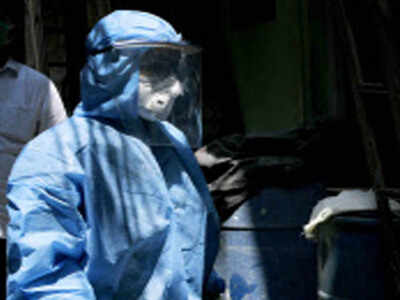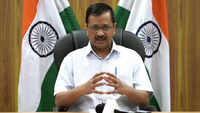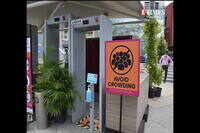
PUNE: As early warnings go, the 2009 H1N1 pandemic was critical for Maharashtra. It was the first pandemic of the 21st century and it threw open the possibility of mass-scale infection capable of overwhelming healthcare systems. Vital lessons were learned and promises were made to boost disease surveillance, the number of doctors and local healthcare.
But 11 years later, Covid-19 has seeped into the gaps that were supposed to have been sealed in the state and particularly Pune district, widely regarded as the epicentre of swine flu in the country.
One indicator of failure is the number of Covid patients pouring into Pune’s intensive care units. Since early July, city doctors have been reporting a noticeable increase in patients from neighbouring districts and rural areas. One estimate states that 20% of all admissions in most city hospitals are from outside Pune district.
Rush of outside nCoV patients to city points to ignored H1N1 lessons
Every week, at least 10 seriously-ill patients are being moved from the rural areas to Sassoon hospital, Yeshwantrao Chavan Memorial hospital or Aundh chest hospital.
Most of these patients are from Satara, Sangli, Kolhapur, Solapur and Ahmednagar — regions impacted by H1N1. In a 2012 paper, experts studying swine flu at the Maharashtra University of Health Sciences, Nashik, and Government Medical College, Miraj, had concluded: “Early case detection can reduce the burden of disease, so the health system should be strengthened.”
The big hospitals are short on beds and staff themselves.
Jitendra Oswal, deputy medical director of Bharati hospital, said they have treated six Covid-19 patients, mainly from Baramati (Pune district), Wai (Satara district) and Sangli since early July. “Three of them needed ICU care. Hospitals in smaller cities and towns don’t have infectious diseases experts or trained intensivists,” he pointed out.
Nashik is one such example. Seven private intensivists have now been roped in by the Nashik civil hospital to visit it once a day in turns to treat coronavirus patients. Intensivists ensure shorter ICU stays.
In Aurangabad too, there has been a similar scramble. The number of ventilators at the government medical college and hospital there rose from 28 to 83. Requests have been made for more machines, but that would mean more staff. The hospital serves eight districts of Marathwada.
“We did very little to improve the public health sector,” said Dr Subhash Salunkhe, technical advisor to the state government on pandemic control. “Only a few states like Tamil Nadu and Kerala took steps to improve local healthcare systems. Merely constructing hospitals will not do. In Maharashtra, there are not enough doctors or trained staff to run these hospitals. We have done nothing, or very little, to prepare for an extreme situation like Covid-19. What we are facing today is the result of several decades of ignorance,” he said.
Salunkhe said even at the national level, not much was done to improve disease surveillance. “We still do not have foolproof early-warning systems that can detect pandemiclevel events. And barring ICMR guidelines, no state has research institutes working on the subject. We need branches of the National Centre for Disease Control in every state.”
Other experts said lapses such as these have led to delayed treatment. A Telanganabased doctor said many of his Covid patients spent at least two days looking up helplines and information on the internet after symptom onset. “Those two days could have been put to better use. The pace of this virus can only be met with swift treatment,” he said.
Sanjay Pathare, director of Pune’s Ruby Hall Clinic, said, “We have been receiving Covid-19 patients from districts in western Maharashtra. Most of them needed ICU care because they delayed medical care.”
Salunkhe said capable institutes should be localised to catch infectious diseases early. “Each state needs to create institutes like the National Institute of Virology. Only then can we have an early-warning net. We need to learn lessons from the coronavirus.”
(With inputs from Santosh Sonawane, Syed Rizwanullah & Satyajit Joshi)
But 11 years later, Covid-19 has seeped into the gaps that were supposed to have been sealed in the state and particularly Pune district, widely regarded as the epicentre of swine flu in the country.
One indicator of failure is the number of Covid patients pouring into Pune’s intensive care units. Since early July, city doctors have been reporting a noticeable increase in patients from neighbouring districts and rural areas. One estimate states that 20% of all admissions in most city hospitals are from outside Pune district.
Rush of outside nCoV patients to city points to ignored H1N1 lessons
Every week, at least 10 seriously-ill patients are being moved from the rural areas to Sassoon hospital, Yeshwantrao Chavan Memorial hospital or Aundh chest hospital.
Most of these patients are from Satara, Sangli, Kolhapur, Solapur and Ahmednagar — regions impacted by H1N1. In a 2012 paper, experts studying swine flu at the Maharashtra University of Health Sciences, Nashik, and Government Medical College, Miraj, had concluded: “Early case detection can reduce the burden of disease, so the health system should be strengthened.”
The big hospitals are short on beds and staff themselves.
Jitendra Oswal, deputy medical director of Bharati hospital, said they have treated six Covid-19 patients, mainly from Baramati (Pune district), Wai (Satara district) and Sangli since early July. “Three of them needed ICU care. Hospitals in smaller cities and towns don’t have infectious diseases experts or trained intensivists,” he pointed out.
Nashik is one such example. Seven private intensivists have now been roped in by the Nashik civil hospital to visit it once a day in turns to treat coronavirus patients. Intensivists ensure shorter ICU stays.
In Aurangabad too, there has been a similar scramble. The number of ventilators at the government medical college and hospital there rose from 28 to 83. Requests have been made for more machines, but that would mean more staff. The hospital serves eight districts of Marathwada.
“We did very little to improve the public health sector,” said Dr Subhash Salunkhe, technical advisor to the state government on pandemic control. “Only a few states like Tamil Nadu and Kerala took steps to improve local healthcare systems. Merely constructing hospitals will not do. In Maharashtra, there are not enough doctors or trained staff to run these hospitals. We have done nothing, or very little, to prepare for an extreme situation like Covid-19. What we are facing today is the result of several decades of ignorance,” he said.
Salunkhe said even at the national level, not much was done to improve disease surveillance. “We still do not have foolproof early-warning systems that can detect pandemiclevel events. And barring ICMR guidelines, no state has research institutes working on the subject. We need branches of the National Centre for Disease Control in every state.”
Other experts said lapses such as these have led to delayed treatment. A Telanganabased doctor said many of his Covid patients spent at least two days looking up helplines and information on the internet after symptom onset. “Those two days could have been put to better use. The pace of this virus can only be met with swift treatment,” he said.
Sanjay Pathare, director of Pune’s Ruby Hall Clinic, said, “We have been receiving Covid-19 patients from districts in western Maharashtra. Most of them needed ICU care because they delayed medical care.”
Salunkhe said capable institutes should be localised to catch infectious diseases early. “Each state needs to create institutes like the National Institute of Virology. Only then can we have an early-warning net. We need to learn lessons from the coronavirus.”
(With inputs from Santosh Sonawane, Syed Rizwanullah & Satyajit Joshi)

Coronavirus outbreak
Trending Topics
LATEST VIDEOS
City
 Bengaluru: Family members of a heart patient who died of cardiac arrest, vandalize ICU ward of Jayadeva hospital
Bengaluru: Family members of a heart patient who died of cardiac arrest, vandalize ICU ward of Jayadeva hospital  Tamil Nadu: Clashes broke out in Cuddalore; boats, huts, vehicles set ablaze
Tamil Nadu: Clashes broke out in Cuddalore; boats, huts, vehicles set ablaze  Delhi govt denotifies 219 containment zones after Centre modifies rules
Delhi govt denotifies 219 containment zones after Centre modifies rules  Gurugram: Cops become spectators as man transporting ‘beef’ thrashed with rods
Gurugram: Cops become spectators as man transporting ‘beef’ thrashed with rods
More from TOI
Navbharat Times
Featured Today in Travel
Quick Links
Kerala Coronavirus Helpline NumberHaryana Coronavirus Helpline NumberUP Coronavirus Helpline NumberBareilly NewsBhopal NewsCoronavirus in DelhiCoronavirus in HyderabadCoronavirus in IndiaCoronavirus symptomsCoronavirusRajasthan Coronavirus Helpline NumberAditya ThackerayShiv SenaFire in MumbaiAP Coronavirus Helpline NumberArvind KejriwalJammu Kashmir Coronavirus Helpline NumberSrinagar encounter
Get the app





